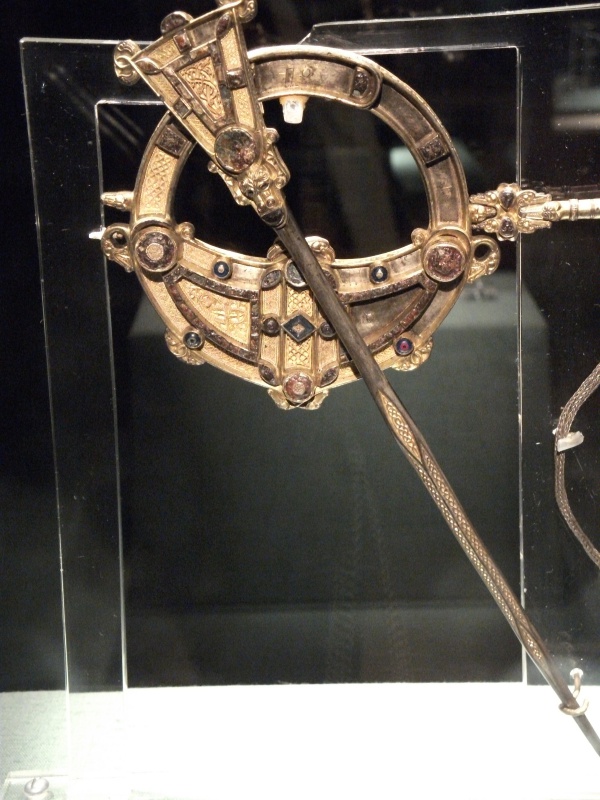Facts About Tara Brooch
The Tara Brooch is a magnificent example of Celtic craftsmanship from around 650-750 AD. Unearthed in 1850 near Bettystown in County Meath, Ireland, this brooch wasn't actually discovered at Tara, despite its name. The naming was a clever marketing strategy by the jeweler who acquired it and produced replicas, associating it with the renowned Hill of Tara to enhance its appeal. Today, the Tara Brooch is a prized exhibit at the National Museum of Ireland in Dublin and played a pivotal role in the Celtic Revival movement of the mid-19th century.
The National Museum of Ireland regards the Tara Brooch as a pinnacle of early medieval Irish metalwork. It is celebrated for its elaborate decoration and the diverse techniques employed in its creation. The brooch itself measures 8.7 cm in diameter, with a 32 cm pin, and is crafted from cast and gilt silver. Its intricate design includes gold filigree panels embellished with animal and abstract motifs, and it is further adorned with glass, enamel, and amber studs. The reverse side is equally ornate, featuring cast decorations with scrolls and triple spiral motifs. Adding to its allure, a silver chain made of plaited wire is attached via a swivel decorated with animal and human heads crafted from cast glass.
The brooch's discovery story is quite enigmatic. Although it was purportedly found on a beach at Bettystown, it was more likely discovered inland. To avoid legal complications with the landowner, the finder—a peasant woman or her sons—claimed it was excavated from a buried box. They sold the brooch to a Dublin jeweler, G. & S. Waterhouse, who astutely renamed it the "Tara Brooch" for better marketability. The brooch was subsequently showcased at various international exhibitions, becoming an iconic emblem of Celtic Revival jewelry.
In the 19th century, the Tara Brooch gained immense popularity within the Celtic Revival trend. Waterhouse prominently featured it in his Dublin shop and at major events like The Great Exhibition in London and the Paris Exposition Universelle. Even Queen Victoria purchased a replica, heightening its fame. The brooch's purported association with the High Kings of Ireland further amplified its allure, sparking a surge in the production of similar Celtic Revival jewelry pieces.

 United Kingdom
United Kingdom